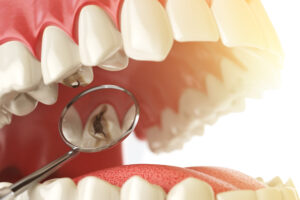 Tooth decay can result from multiple factors, including poor oral hygiene, bacteria in the mouth, and consuming sugary foods or drinks. Once a tooth has begun to decay, it’s important to get it treated promptly to avoid further damage. The best way to deal with your case of tooth decay will depend on the extent of the damage and your personal needs.
Tooth decay can result from multiple factors, including poor oral hygiene, bacteria in the mouth, and consuming sugary foods or drinks. Once a tooth has begun to decay, it’s important to get it treated promptly to avoid further damage. The best way to deal with your case of tooth decay will depend on the extent of the damage and your personal needs.
Stages of Tooth Decay
Tooth decay occurs in stages. If it’s caught in an early stage, the decay can be resolved with less intensive treatments.
The five main stages of tooth decay include:
- Demineralization
In this early stage, the outer layer of the tooth, called the enamel, begins to demineralize. The minerals are lost to the plaque bacteria, which produces acids.
- Enamel decay
In the next stage, the enamel continues to decay and the appearance of the tooth may darken. At this point, the tooth may develop a brown spot.
- Dentin decay
Beneath the enamel is the dentin. This layer of the tooth is softer and therefore more vulnerable to damage. At this point, you may have sensitivity in the affected tooth.
- Pulp damage
The pulp is the deepest layer of the tooth. When it becomes damaged from tooth decay, it will swell. This puts pressure on the nerves in the pulp, causing pain and irritation.
- Abscess
In this advanced stage of tooth decay, bacteria can lead to an infection. An abscess, which is a pocket of pus caused by infection, may form at the bottom of the tooth.
Dealing With Tooth Decay
The best treatment for tooth decay will depend on its stage. In the early stage of demineralization, tooth decay can often be treated with a fluoride treatment provided by your dentist. When the decay affects the enamel, it typically leads to cavities, which require fillings.
Once decay reaches the dentin, the tooth will need more than a filling to be fully restored. In this case, your dentist will typically remove the decayed portion of the tooth and use a crown to replace it.
When decay hits the pulp and/or leads to an abscess, your dentist may perform a root canal or an extraction to remove the decayed tooth. A crown can then be used to replace the tooth and restore your smile.
